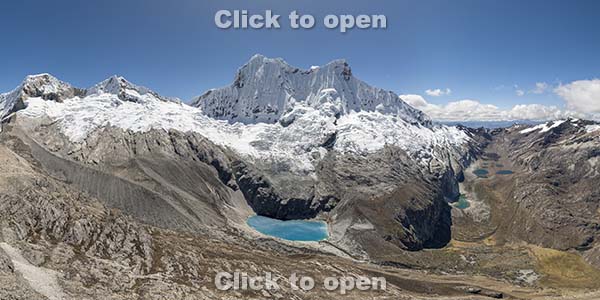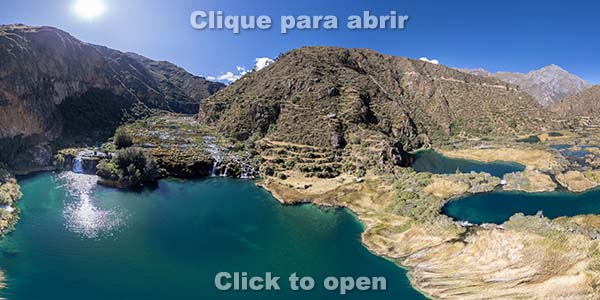Get to know the photo book "The Most Beautiful Trails of Patagonia"
Torres del Paine, El Chaltén, Bariloche, Ushuaia, Villarrica, Cerro Castillo, Dientes de Navarino and Parque Patagonia
Peru’s unmissable landscapes
Peru has very varied landscapes across its 1,285,000 km², making it possible to drive, in a few hours, from the arid view of the coast to altitudes of almost 5 thousand meters, with lakes and snow-capped peaks, or to regions of dense forest, heat and constant rain from a tropical forest.
Since beauty is a subjective criterion, I don’t intend to think that this list is definitive, because there is still a lot for me to see, but with the photos you can decide which destinations you want to include in your trip and I believe that some places shown here will be a surprise for you, just like they were for me.
This article only shows landscapes that can be reached by car or day hikes, and there is no need to camp. To see the multi-day hikes that I consider to be the most beautiful in Peru, visit the links below:
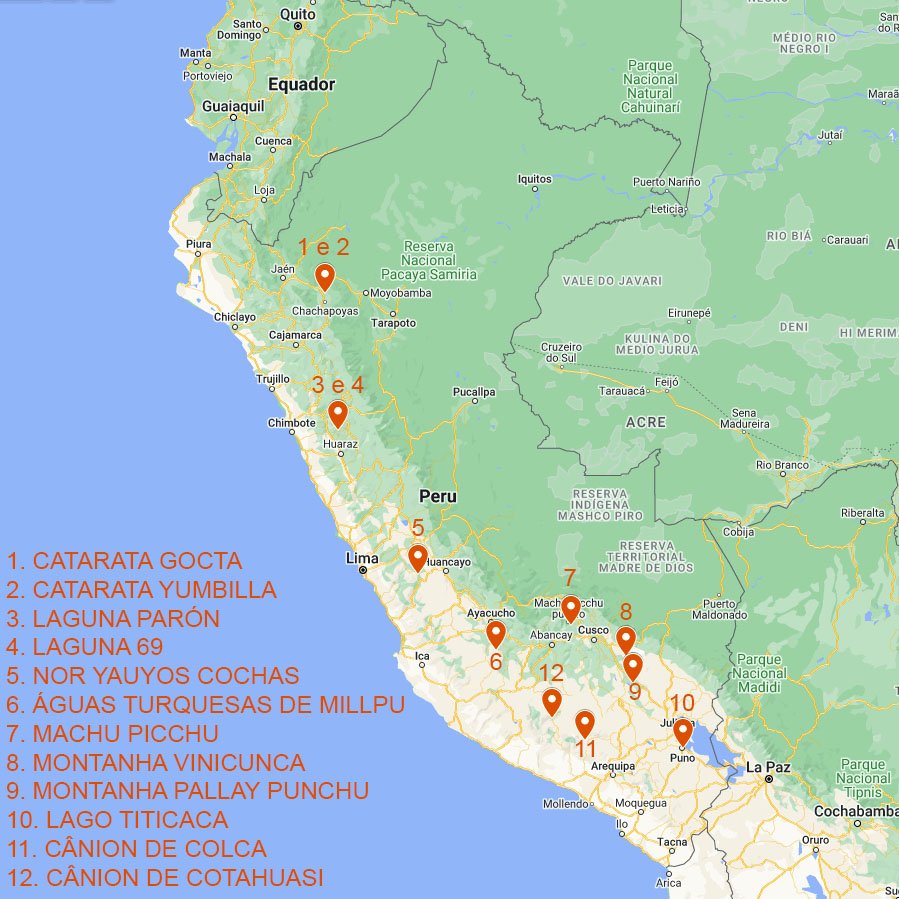
Map taken from Google Maps with the location of the attractions described in this article.
1. Gocta Waterfall
In a country full of mountains and rivers, it is natural that there are many waterfalls and, among them all, the one that stands out the most is Gocta, as it has two falls in a row that, together, are 771 meters high! According to World Waterfall Database, this is the 18th highest waterfall in the world in the overall height category, that is, when several falls in a row are added together. However, if we consider the free-falling drop category, which is when water falls in free fall and without considering the sum of falls in sequence, the lower Gocta fall is the fourth highest in the world, at 540 meters!
In addition to the great height, what is even more impressive is the enormous volume of water, since in the Amazon rain is constant even in winter, the “dry” season. In fact, there is so much water that the waterfall can be easily seen from the village of Cocachimba, 4 km away.
There are two trails to get to the base of the waterfalls, one starting in San Pablo and the other in Cocachimba. From Cocachimba, which has more hotels and restaurants, there is a well-marked trail that leads to the base of the lower fall and there are always groups on this path. The trail is 11 km long round trip and has a cumulative elevation of 1,050 meters.
Starting from San Pablo, the trail leads to the base of the upper fall, is 11.7 km (round trip) and has an accumulated elevation of 720 meters, including a small detour to a viewpoint on the path that connects the upper trail to the lower one. In fact, my recommendation is that you do the complete circuit, starting in San Pablo, going to the base of the upper waterfall, taking the trail that leads to the lower area, arriving at the base of the biggest waterfall and returning to Cocachimba, in a circuit of 15.3 km, with an accumulated elevation of 1,332 m.
Click here to download the tracklog at Wikiloc.
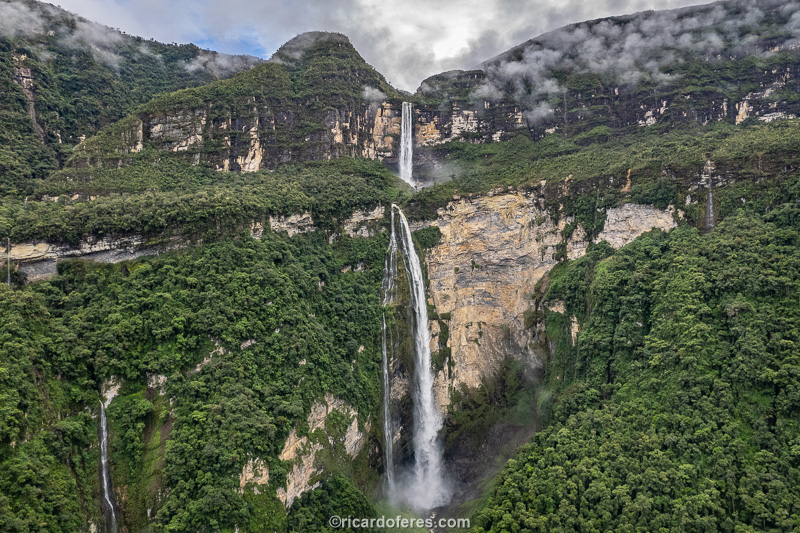
The two falls combined are 771 meters high!
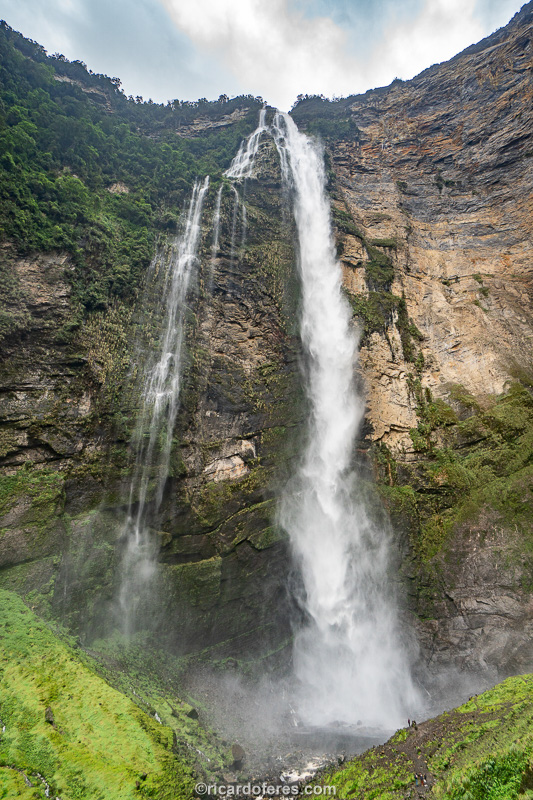
The lower fall of Gocta is 540 meters high!
2. Yumbilla Waterfall
In the same region as Gocta, but close to the village of Cuispes, Yumbilla is a series of waterfalls that, together, are 896 meters high, but from the lookout it is only possible to see the two upper falls. With the drone I was able to photograph the entire sequence, where you can see 4 waterfalls, but it seems that inside the canyon there are more falls. In any case, what matters is what we can see and Yumbilla is not as interesting as Gocta, not only because of the lower visible height of the viewpoint, but also because it has much less water.
Halfway along the trail you pass the Cristal and Medio Cerro Falls, which I found even more interesting than Yumbilla as you have to go behind the waterfall.
At the start of the trail there is another path, which leads to the Pabellón Falls, which despite being very high, the viewpoint only allows us to see approximately 50 meters of it. I don’t think it’s worth spending a day in Cuispes to see Pabellón, but if you can do both trails in the same day, your time will be well spent. Anyway, I don’t consider Yumbilla to be one of Peru’s must-see attractions, unlike Gocta, which should be on the list of everyone who likes waterfalls.
Click here to download the tracklog at Wikiloc.

Aerial view of the various falls of Yumbilla Falls which, when measured together, reach 896 meters.
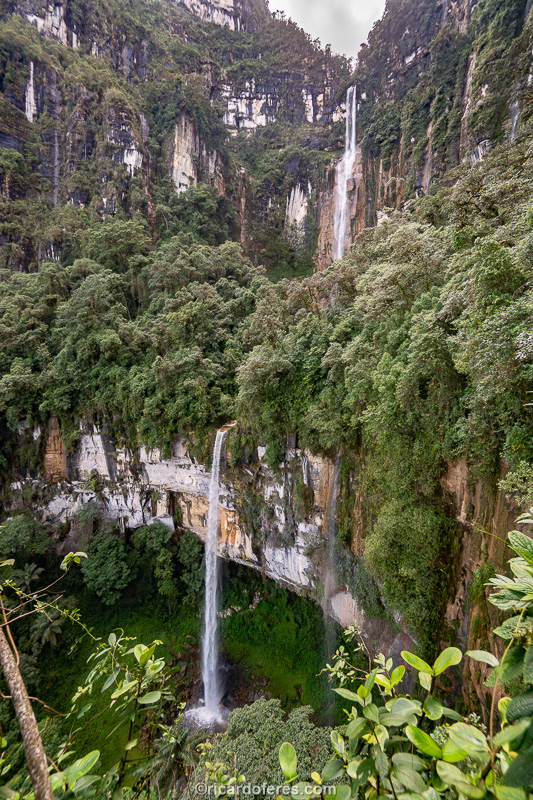
Two upper Yumbilla falls seen from the viewpoint.
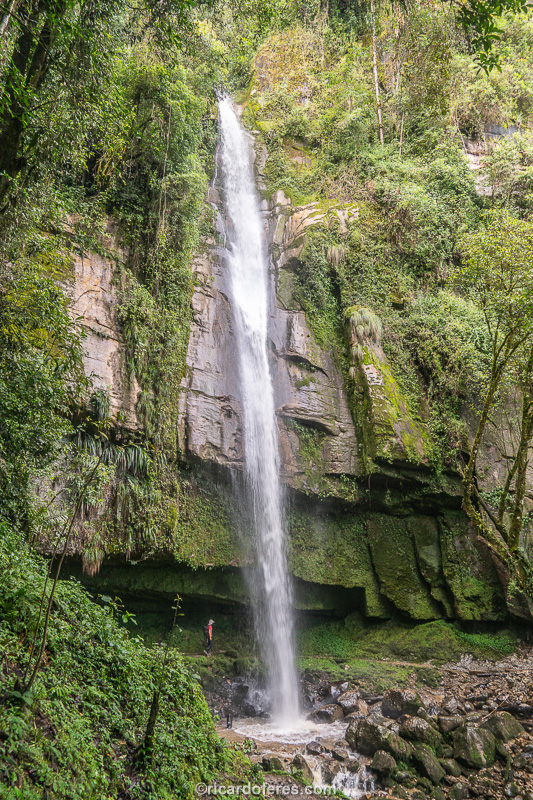
Catarata Medio Cerro, on the trail to Yumbilla.
3. Parón Lagoon
There are many beautiful high-altitude lakes throughout Peru and, among them all, the one with the easiest access is Laguna Parón, in the Blanca Range, as it is possible to reach its shores by car, at 4,206 meters above sea level. However, if you want an even more beautiful view, take the 1.6 km trail (round trip) and climb 155 meters to a viewpoint from where you can take incredible photos of Laguna Parón and the surrounding mountains: Artesonraju (6,025 m) , Pirámide (5,885 m), Chacraraju (6,108 m) and Huandoy (6,395 m).
Click here to download the tracklog at Wikiloc.
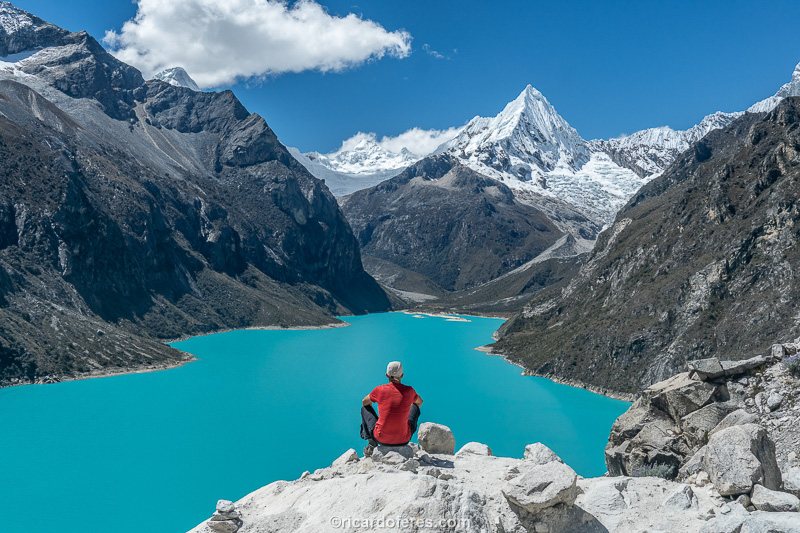
Laguna Parón lookout and, in the background, the Nevado Pirámide.
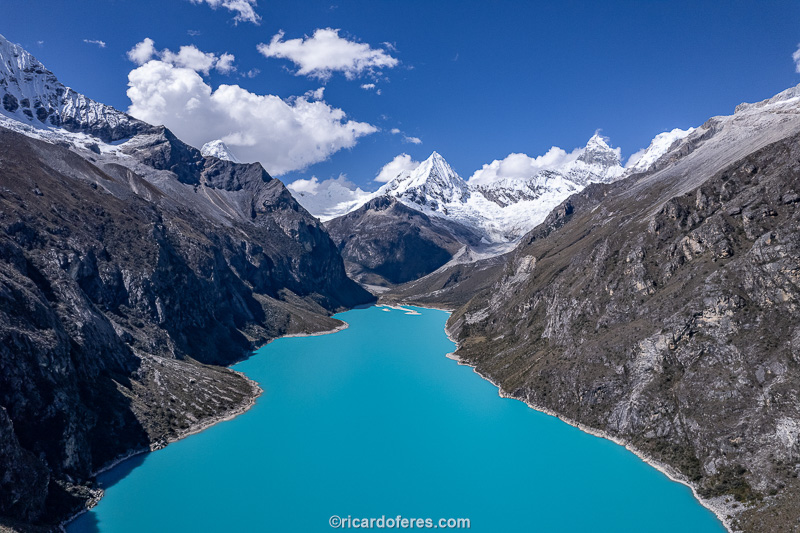
Aerial view of Laguna Parón.
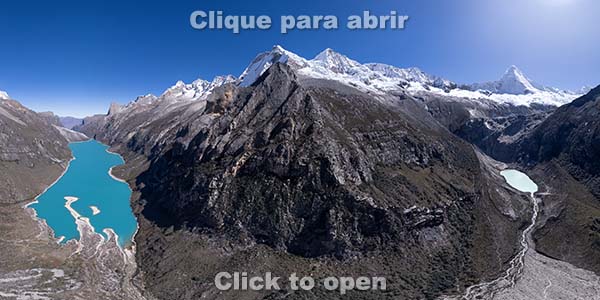
Click to open a 360-degree aerial photo showing Laguna Parón and the Artesonraju, Chacraraju, Huandoy, Pirámide and Pisco mountains.
4. 69 Lagoon
As beautiful as Parón, Laguna 69 is also a famous destination, but to get there you have to walk 14 km (round trip) and climb 860 meters, reaching an altitude of 4,626 meters, which takes its toll on those who are not very well acclimatized. The view from the lakeside is already impressive, but if you have legs to climb a little further, there is a viewpoint 100 meters above (1 km round trip) that offers a panoramic view of the lake and Nevado Chacraraju (6,108 m).
Click here to download the tracklog at Wikiloc.
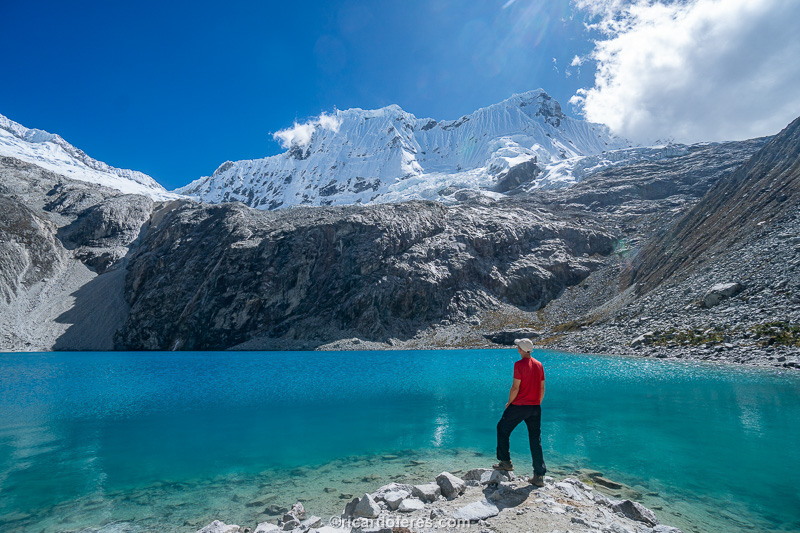
69 Lagoon and Nevado Chacraraju.
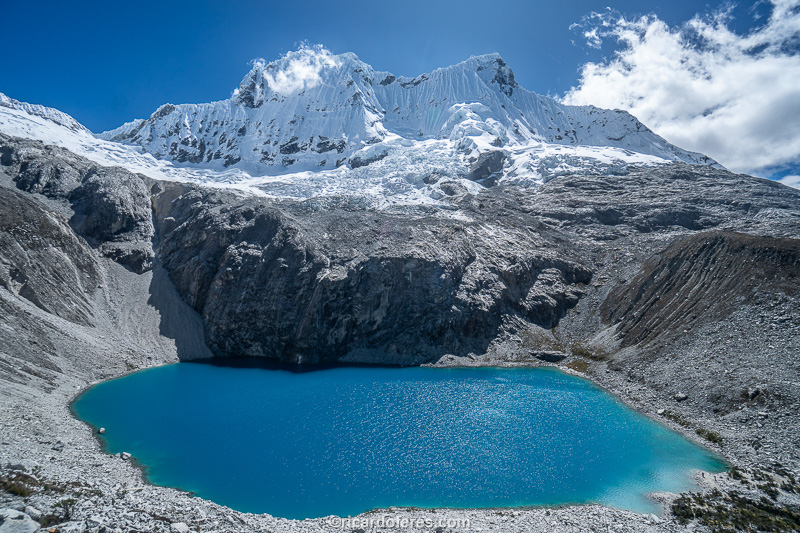
View from the lookout above Laguna 69.
5. Nor Yauyos Cochas Landscape Reserve
Despite being just 6 hours from Lima, this Reserve is little known even to Peruvians, possibly because it does not have a very developed tourist infrastructure and because it competes with many other famous destinations, because lack of beauty is certainly not the reason. There are caves, snowy mountains, lakes and waterfalls, these being, in my opinion, the most interesting thing.
I’ve been in Nor Yauyos Cochas during winter, which is not the most beautiful time of year as there is less water, but even so, I saw some beautiful falls, with a very different look from the waterfalls I knew because of the plants through which the water flows, but it’s easier for you to understand by looking at the photos below.
Very close is Uchco Canyon, which is crossed by a winding, narrow and very scenic road, so if you are driving, take the opportunity to get to know it.
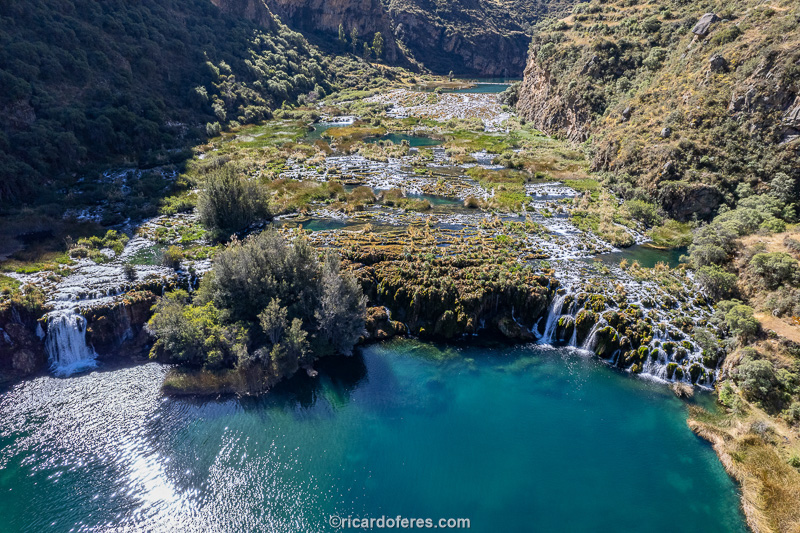
These are the Carhuayno Falls, which in summer have much wider falls.
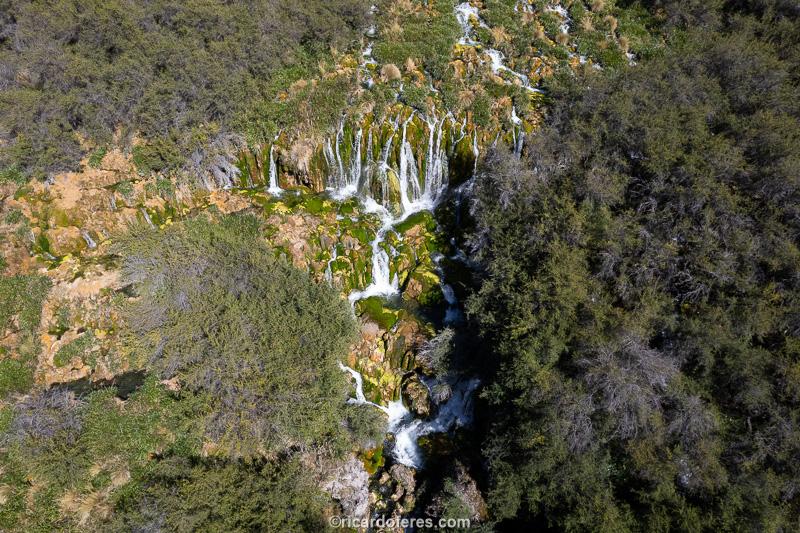
Bosque del Amor (Forest of Love) has a series of waterfalls and rapids amidst its lust vegetation.
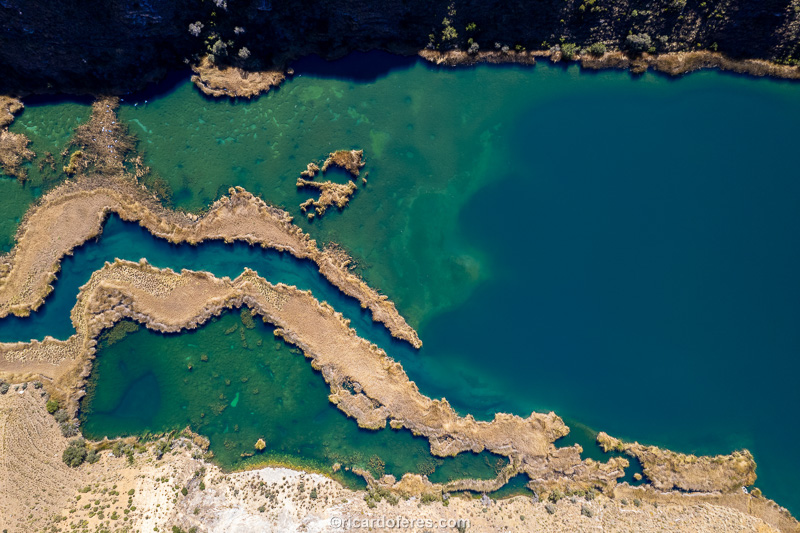
Aerial view of Papacocha Lagoon, on the side of the dirt road that runs through Nor Yauyos Cochas.
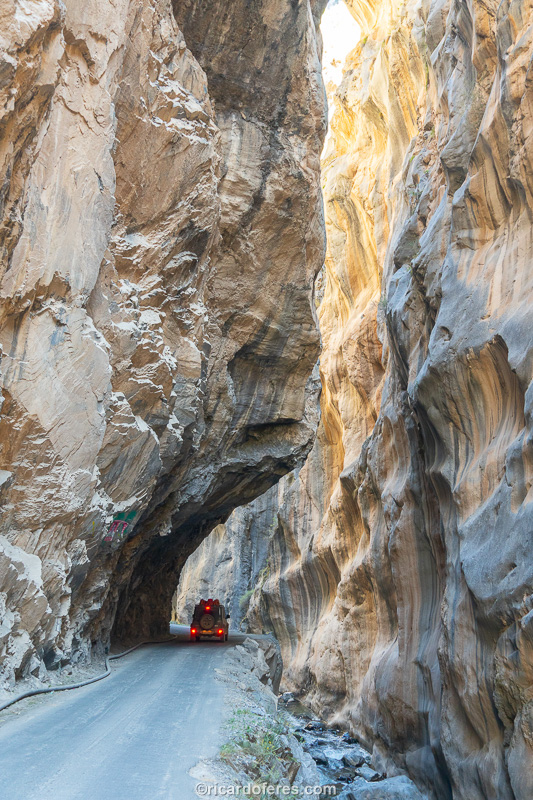
Road that cuts through the Uchco Canyon.
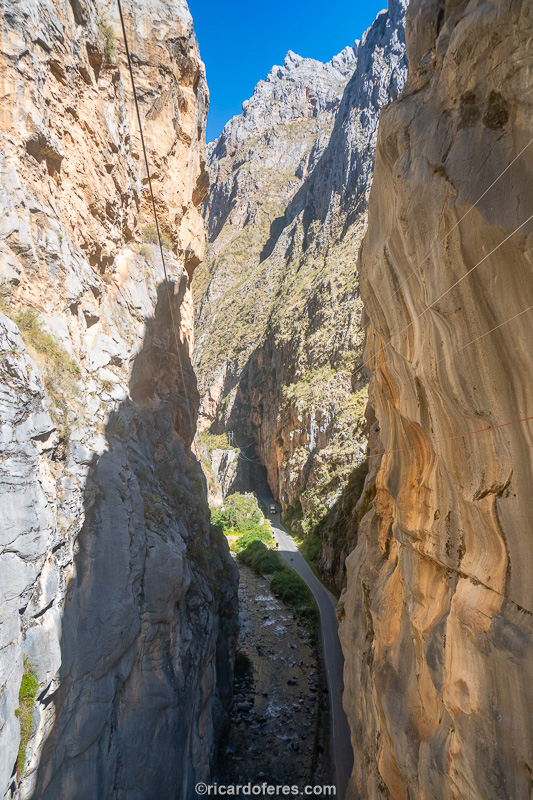
This canyon is close to Nor Yauyos Cochas, on the way to Caraz and Lagunas Parón and 69.
6. Águas Turquesas de Millpu (Millpu Turquoise Waters)
Another little-known attraction, but one of the most beautiful in all of Peru, is the Turquoise Waters of the Millpu River, which runs through a gorge, creating several natural pools that, during winter, take on a strong turquoise color. The photos seem to be edited, but I assure you that there is no color saturation in the images below.
It is worth mentioning that in the summer, when the rain is constant, the water loses its color, so visit in the winter and hope that there is no heavy rain before your visit, but this is rare in the dry season.
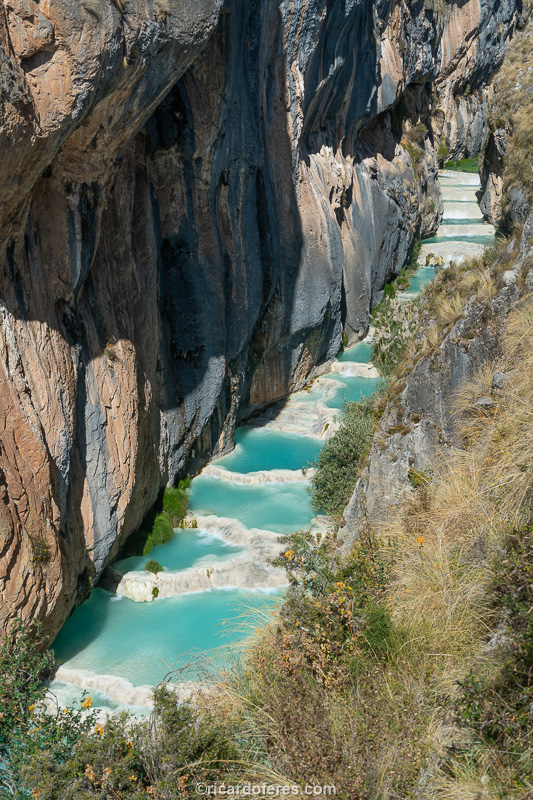
Natural pools formed by the Millpu River.
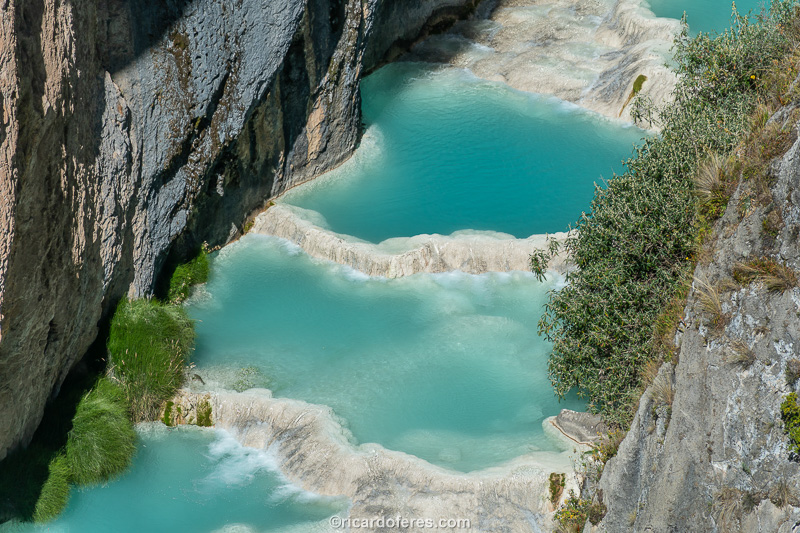
This beautiful color is caused by the minerals that are deposited in natural pools, and during the rainy season the greater flow of water carries away the sediments and the river does not have this tone.
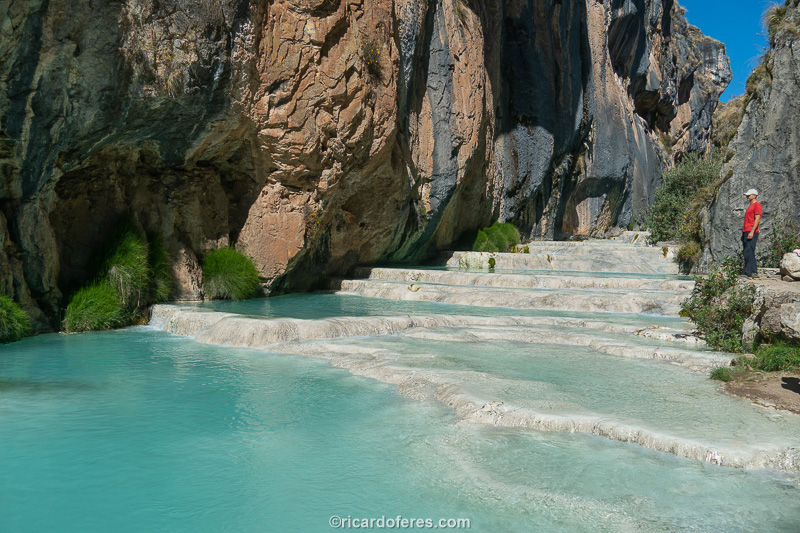
If you search on Google, you will see photos of people bathing, but this was prohibited due to the degradation of the formations and the change in the color of the water by moving the sediments.
7. Machu Picchu
The most famous attraction in Peru, and one of the most famous in the world, is undoubtedly Machu Picchu. So famous that I even thought about not including it in this article, but as there are some tips that I think it’s good for you to know, here they are: Each type of ticket entitles you to visit a part of the ruins, you are not allowed to walk freely throughout the entire site. The ticket that I consider most interesting is the one that allows you to climb the Huayna Picchu mountain, having a panoramic view of the ruins that is worth the effort of the steep 250 meter climb. In fact, the summit of Huayna Picchu is small, so if you can go early in the day and climb quickly, you will have some peace of mind to enjoy the view and take your photos.
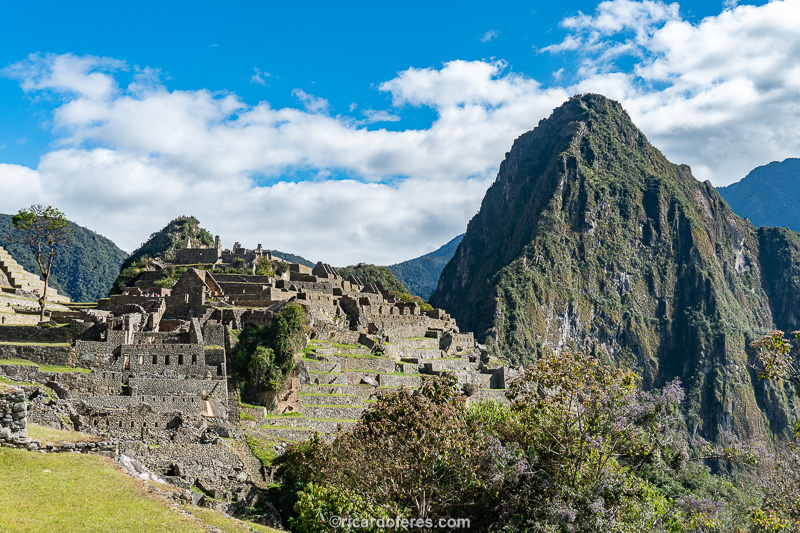
Machu Picchu and, in the background, Huayna Picchu Mountain.
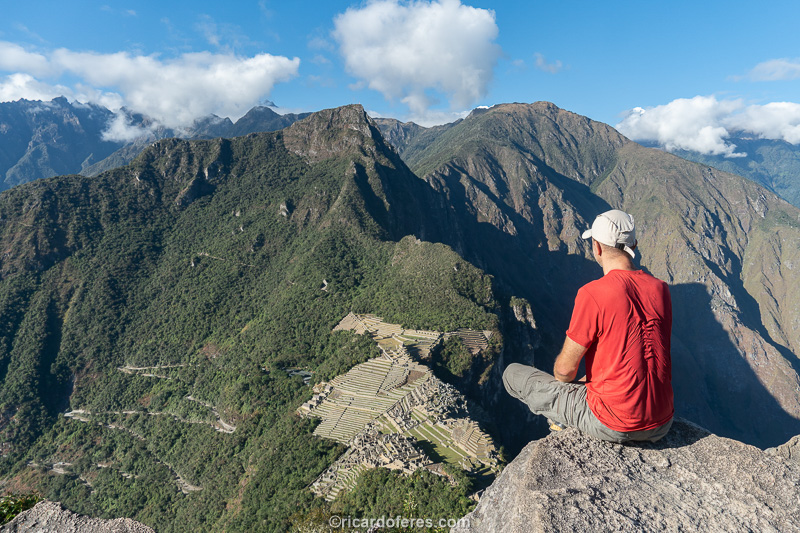
Huayna Picchu summit.
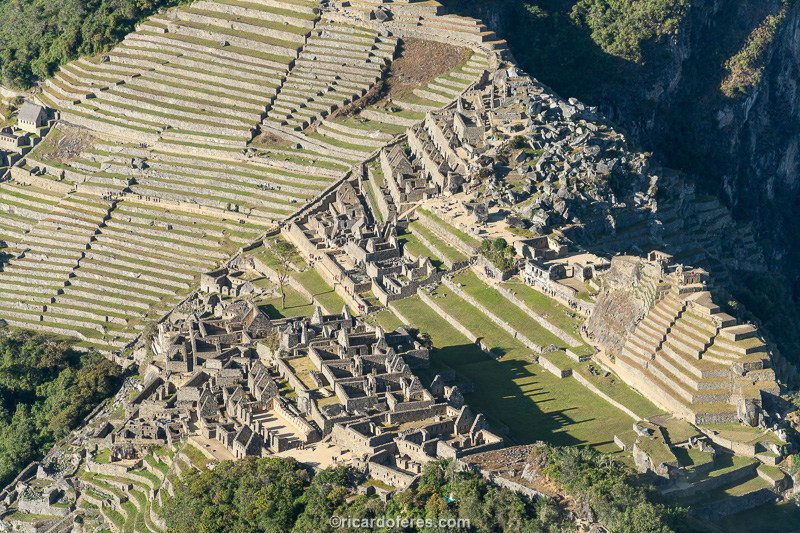
Machu Picchu seen from Huayna Picchu summit.
8. Vinicunca Mountain
There are colorful mountains from the Northwest of Argentina (click here to see an article about this sensational region of the Andes), passing through all of Bolivia and arriving in central Peru, where the most famous of them is located, Vinicunca, which is also called Montaña 7 Colores or Rainbow Mountain. The fame is deserved as it is a truly incredible formation and, as it is 3 hours from Cusco, it receives hundreds of visitors every day. If you are driving, I recommend that you go in the afternoon, so the vans are already leaving for Cusco and you will have some peace and quiet. Including round trip, the walk is 7 km with a climb of 400 meters, which seems little, but without good acclimatization it will not be easy to reach 5,074 meters of altitude..
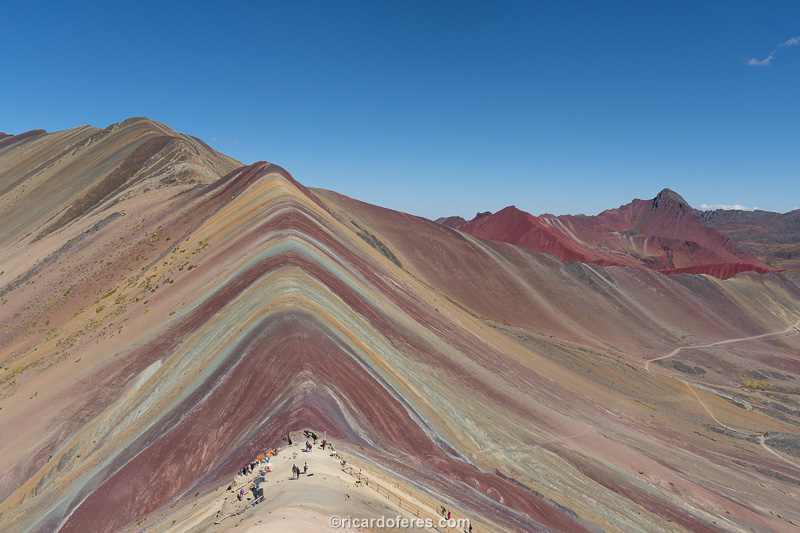
On the right is the trail that leads to Vinicunca lookout.

Vinicunca Mountain.
9. Pallay Punchu Mountain
Much less famous, but equally impressive colorful mountain as Vinicunca, is Pallay Punchu del Apu T’acllo. The lesser fame is due to being even further from Cusco, more than 4 hours by car, but to compensate, the walk is shorter and easier. The entire circuit is 2.5 km long, with an elevation of 225 meters and a maximum altitude of 4,829 meters. The formation does not have as many colors as Vinicunca, but it has a much larger area and it is possible to walk all around the mountain to photograph it from different angles, as well as having a beautiful view of Laguna Langui. I visited Pallay Punchu on a Sunday and, even though it was a day off, I only met 4 Peruvians who work in the region. If it were a weekday, I would probably have the entire mountain to myself!
Click here to download the tracklog at Wikiloc.
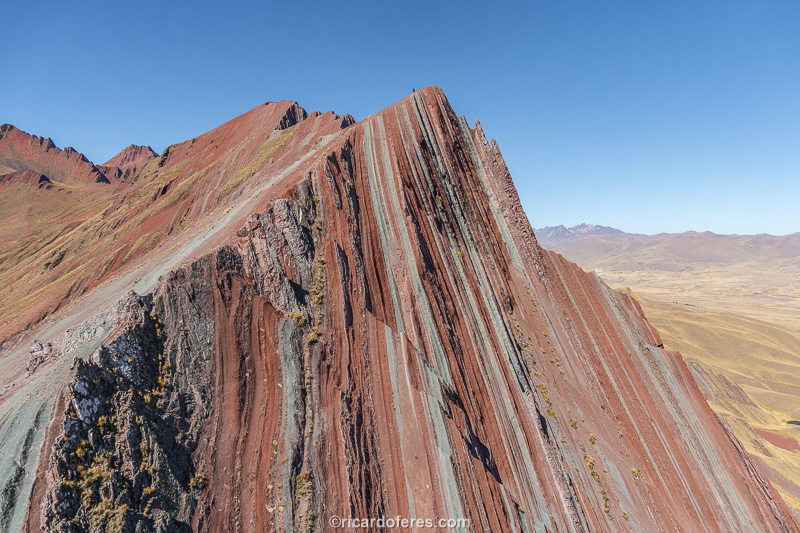
Note that there is a person almost at the top of Pallay Punchu, to have a size reference.
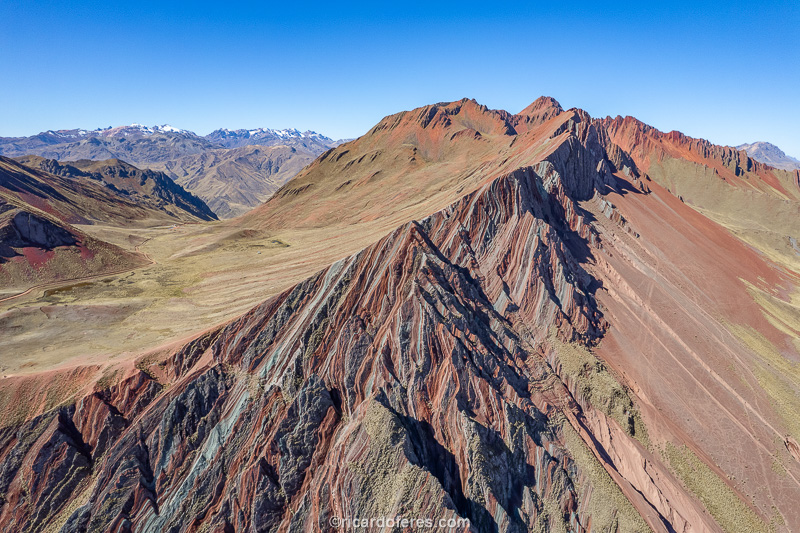
Aerial photo of the colorful T’acllo mountain, where the formation known as Pallay Punchu is located.
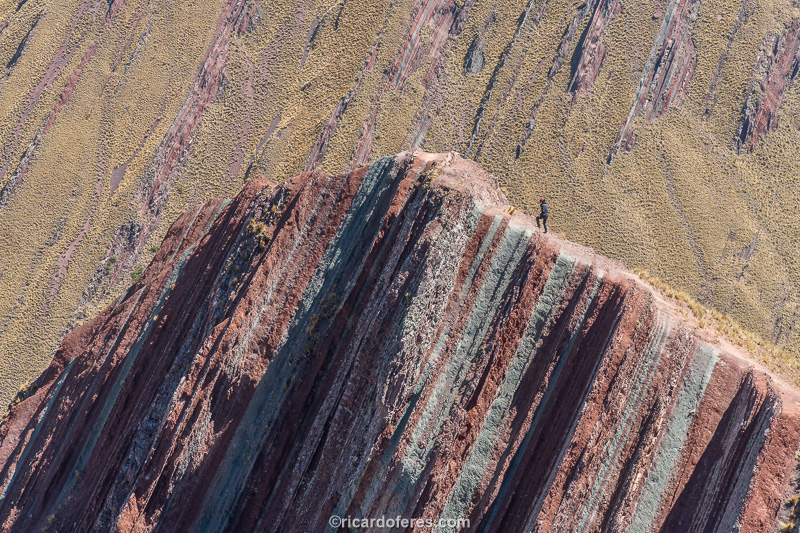
Pallay Punchu.
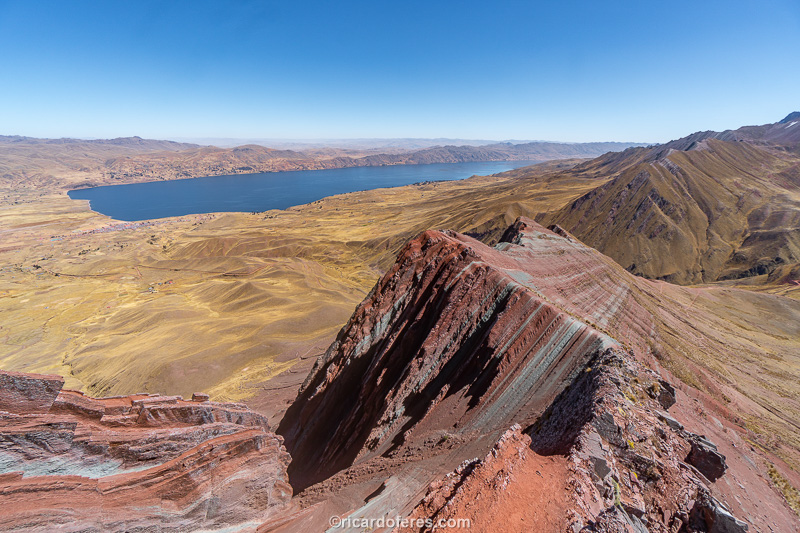
From T’acllo mountain you can see the city of Layo and Langui Lagoon.
10. Colca Canyon
Colca is the most famous canyon in Peru and one of the deepest in the world, with good tourist infrastructure in Chivay, the main city, and several villages spread across the canyon with some accommodation and restaurants. The region is beautiful, but in my opinion, most of it looks more like a valley than a canyon, as the mountains are not steep. Just close to Cruz del Cóndor and also at its western end, in a much less touristy region with bad roads, the canyon has deep walls and the landscape becomes more imposing, but in this stretch I didn’t see any tourists, just the locals. What I found most interesting in Colca was the Mirador del Cóndor, where in the early morning you are very likely to spot the Andean condor (I saw several), one of the largest flying birds in the world, with a wingspan of up to 3.3 meters! Honestly, I believe that Colca is only worth a visit if you have a lot of free time in Peru, otherwise I recommend that you visit the canyon that I mention in the next topic.
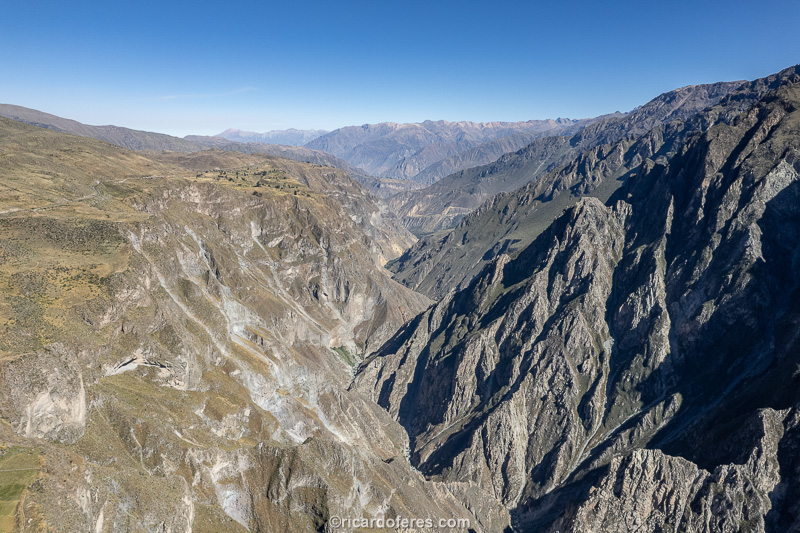
Aerial photo of the Colca Canyon near Cruz del Cóndor lookout.
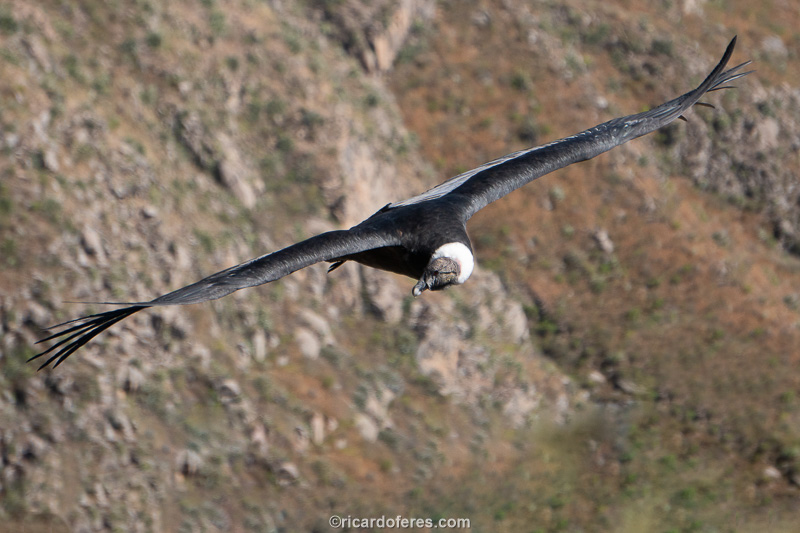
The condor can be seen every morning from Cruz del Cóndor lookout.

Click to open a 360-degree aerial photo with views of Lari, Maca and Madrigal. Note that in this region the canyon looks more like a valley.
11. Cotahuasi Canyon
Much less famous than Colca, Cotahuasi is even deeper and actually looks like a canyon, with immense steep walls that, at the bottom, see the Cotahuasi River flowing. The reason it is less visited is that it is further from Arequipa than Colca, there are fewer buses to the city of Cotahuasi, the main city in the canyon, there are few accommodations and restaurants and, what makes it more complicated for those who don’t have a car, transport between the villages are quite precarious. The first time I went to Cotahuasi I didn’t have a car and I struggled to find out the bus schedules, as not even the locals knew how to tell them correctly. Anyway, I stayed there for eight days and it was an incredible trip! The second time, I went by car and had a much easy experience and made better use of my time, so I recommend that, if you haven’t traveled by car to Peru, you rent one in Arequipa as, with that, you’ll get to know a lot more points in less time. Below I have included some photos just to give you an idea of the region, but I recommend that you click here to open an article I wrote about this canyon, I’m sure you’ll be surprised.
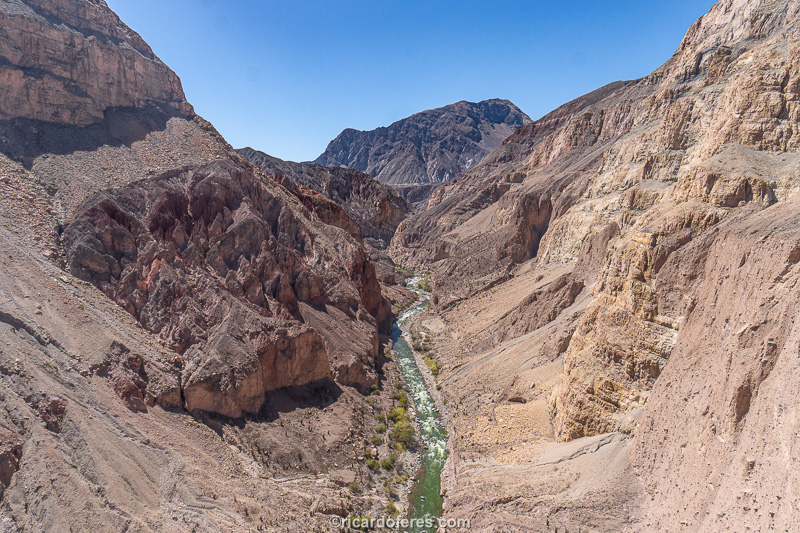
Cotahuasi River close to Chaupo Village.

Huito Stone Forest.
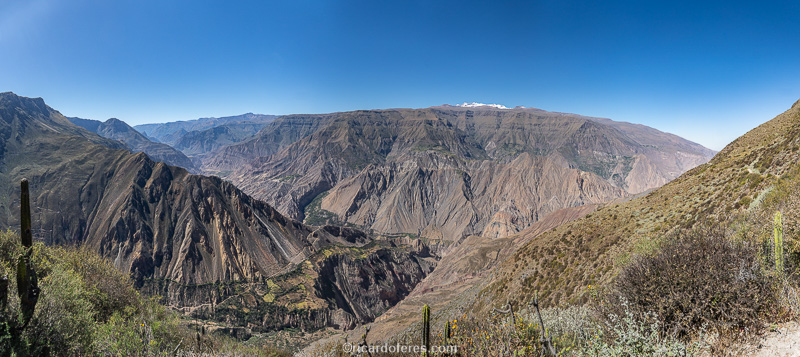
South of the Cotahuasi Canyon, on the trail that connects Charcana to Quechualla.
Click here to open an article about the Cotahuasi Canyon, with a description of the attractions and many photos.
12. Titicaca Lake
The highest navigable lake in the world is located at 3,820 meters above sea level, has approximately 8,300 km² and is divided between Peru and Bolivia. In fact, the Bolivian side is more famous, with the city of Copacabana receiving many tourists from all over the world, but the Peruvian side also has good attractions, such as Uros floating islands, which are built with reeds, the caballitos de totora, typical boats as well built of reeds and Amantaní and Taquile islands, which can be visited on a day trip or overnight, which was my option to see a sunset in Titicaca. It’s true that Puno, the base city for the tours, is less interesting than Copacabana, in Bolivia, but I believe it’s worth a visit if you’re already in that region of Peru.

The crystal clear water of Lake Titicaca and Taquile Island.
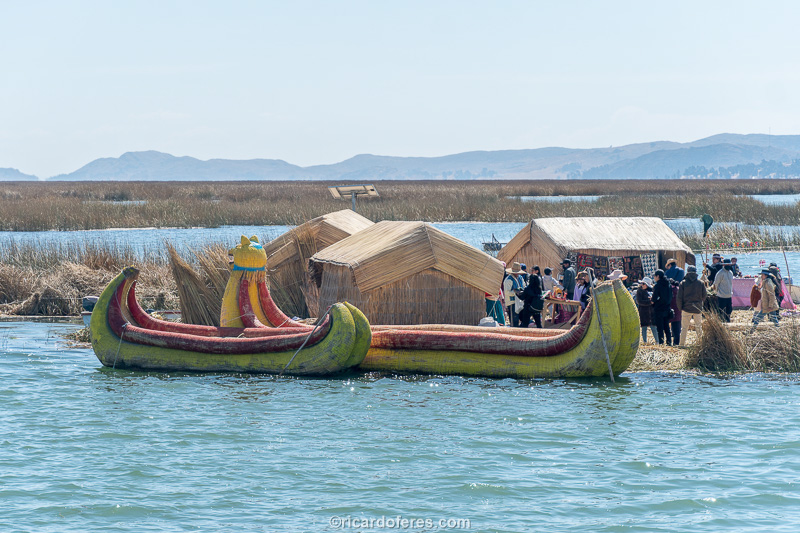
These boats are called caballitos de totora (little reed horses).

House made of totora (reed) in one of the Uros floating islands, which are also made of de totora.
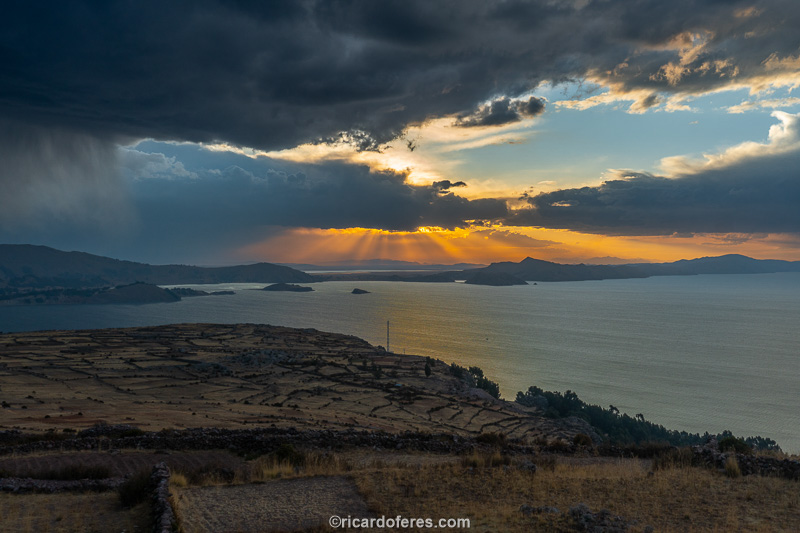
Sunset at Amantaní Island.
Get to know the photo book "The Most Beautiful Trails of Patagonia"
Torres del Paine, El Chaltén, Bariloche, Ushuaia, Villarrica, Cerro Castillo, Dientes de Navarino and Parque Patagonia

